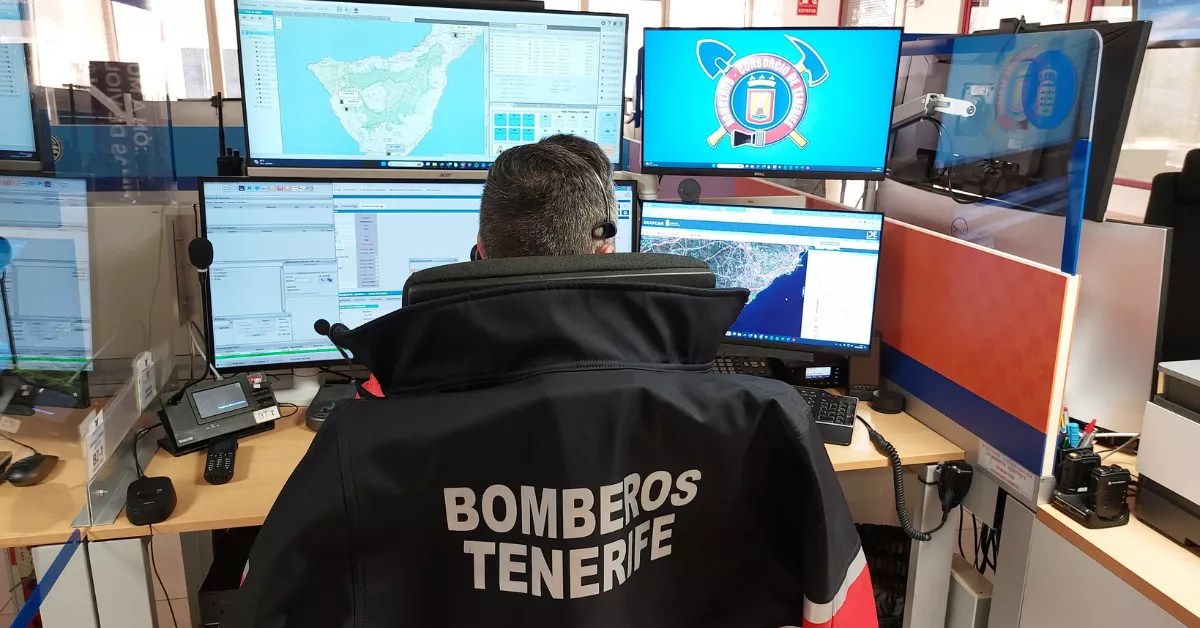Security cameras and a specific surveillance initiative, coordinated between the National Police and Local Police, along with improved lighting around the access stairs, are among the actions that the Santa Cruz City Council will deploy in the short term to address the undesirable situations occurring outside the Municipal Reception Centre (CMA), commonly referred to as a shelter.
These issues have been acknowledged by the capital’s mayor, José Manuel Bermúdez, following complaints from local residents highlighted in national media outlets, such as La Razón and Ana Rosa Quintana’s programme on Telecinco.
The council admits that outside the CMA there are “difficult situations” linked to drug trafficking and non-compliance with municipal regulations, including urinating and defecating in public spaces. However, the councillor stressed that “these incidents happen in the street, outside the municipal centre, as the atmosphere within the shelter remains ordinary among its occupants and within the facilities themselves.”
Bermúdez, along with councillors from various municipal departments and management personnel, met yesterday with representatives from the local community and schools adjacent to the shelter, as well as the National Police and Local Police, to assess the seriousness of the incidents occurring on public streets, which the Corporation acknowledges. “Among other measures, we have tasked the Municipal Institute of Social Attention (IMAS) with developing a roadmap for the decentralisation of the facility, a project we expect to complete within two to three months,” he stated.
In light of the ongoing issues in the vicinity of the shelter, immediate measures were established during the meeting, in agreement with residents, the School Council, the CEIP Director Los Verodes, and the local residents’ association, to address these pressing matters.
Nonetheless, the mayor has instructed IMAS “to prepare a document outlining the path forward for the decentralisation of the municipal centre, which currently accommodates about 100 individuals. The intention is to relocate them to other centres and several locations with fewer capacities, ranging from 25 to 30 at most, across various sites. The goal is to decentralise the CMA in the medium term to maintain only a handful of residents,” he remarked.
The Chicharrero mayor expressed concern that “the involvement of other administrations, such as the Cabildo or the Canary Islands government, has been lacking, as this is a situation that impacts us all.” He highlighted that “the involvement of the educational sector is essential, which falls under the Ministry of Education’s remit, alongside the presence of individuals with mental health challenges and others who require social health facilities where public health actions must be taken. Additionally, there are cases of other homeless individuals arriving at the centre with addiction issues.”
The Councillor for Social Attention, Charín González, revealed last September to a news outlet that IMAS “aims for the municipal reception centre to transition into a day facility, with a significantly reduced number of beds available for overnight stays. Furthermore, due to the various locations within the municipality, we plan to establish several small centres with available spaces,” she noted.
González clarified that “we do not wish to continue operating the CMA as a large-scale centre, as it currently stands. We intend to ensure the right facilities are in place and will not expand. Instead, other municipalities need to enhance their offerings. Our aim is to promote a different model of care, focused on smaller spaces and centres with fewer users.”
In the coming months, the mayor is hopeful that the study to find new location alternatives for shelter users will help alleviate residents’ concerns, especially considering the increasing number of individuals approaching the CMA due to the influx of migrants to the island, alongside others who relieve themselves nearby or consume alcohol from eight in the morning.


An “unsustainable” situation for local residents
The controversy surrounding the shelter is not a recent development; however, last Monday, La Razón and the programme hosted by Ana Rosa Quintana highlighted the grievances of local residents, who have referred to the shelter as “a hostel filled with horrors” due to “the surge of migrants and drug users.” Individuals engaging in drug trafficking and even relieving themselves just metres from a school. This has created an “unsustainable” condition for residents who must endure theft and violence in the area, as stated by a representative of the community.
















